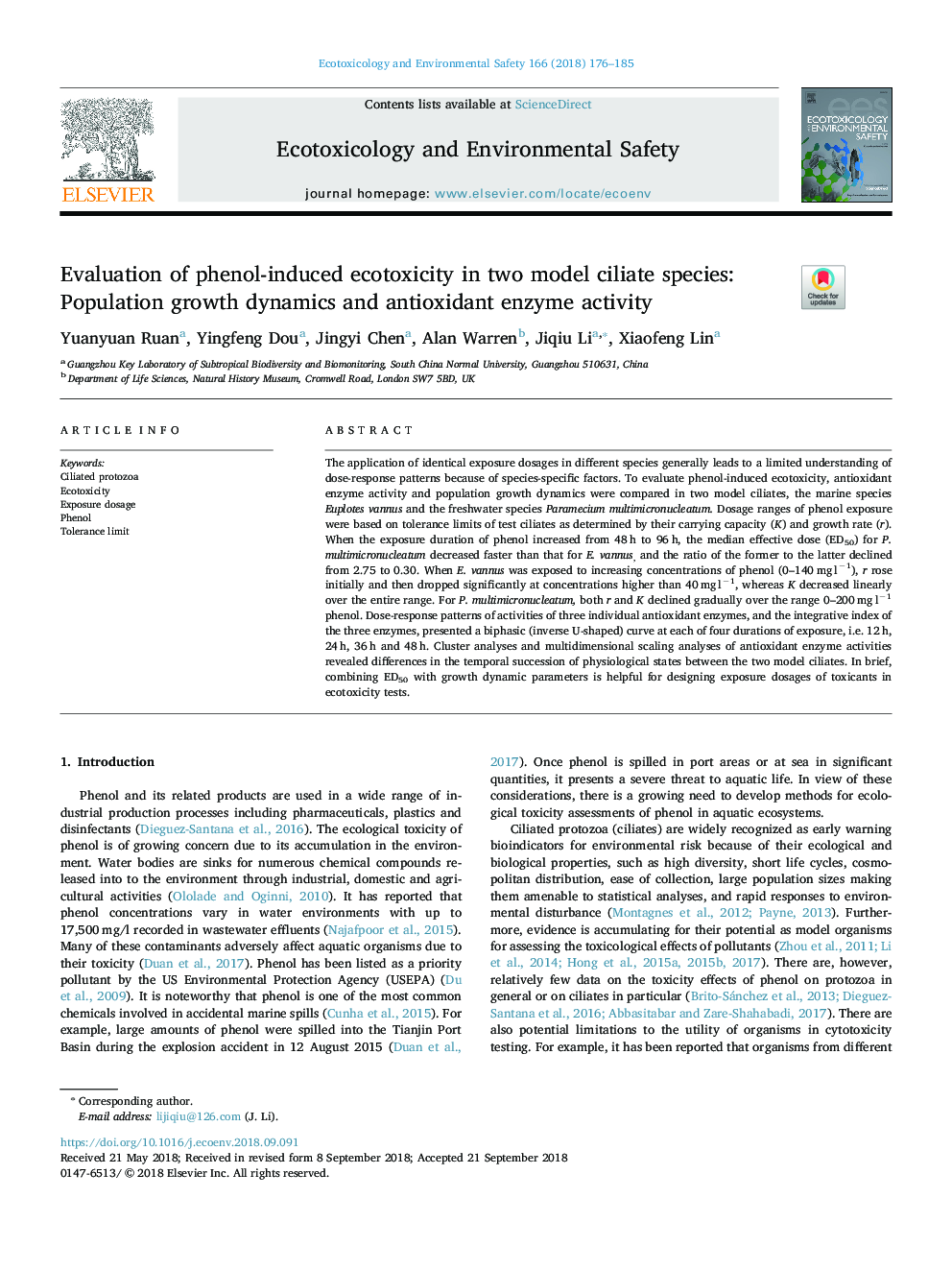| Article ID | Journal | Published Year | Pages | File Type |
|---|---|---|---|---|
| 11025090 | Ecotoxicology and Environmental Safety | 2018 | 10 Pages |
Abstract
The application of identical exposure dosages in different species generally leads to a limited understanding of dose-response patterns because of species-specific factors. To evaluate phenol-induced ecotoxicity, antioxidant enzyme activity and population growth dynamics were compared in two model ciliates, the marine species Euplotes vannus and the freshwater species Paramecium multimicronucleatum. Dosage ranges of phenol exposure were based on tolerance limits of test ciliates as determined by their carrying capacity (K) and growth rate (r). When the exposure duration of phenol increased from 48â¯h to 96â¯h, the median effective dose (ED50) for P. multimicronucleatum decreased faster than that for E. vannus, and the ratio of the former to the latter declined from 2.75 to 0.30. When E. vannus was exposed to increasing concentrations of phenol (0-140â¯mgâ¯lâ1), r rose initially and then dropped significantly at concentrations higher than 40â¯mgâ¯lâ1, whereas K decreased linearly over the entire range. For P. multimicronucleatum, both r and K declined gradually over the range 0-200â¯mgâ¯lâ1 phenol. Dose-response patterns of activities of three individual antioxidant enzymes, and the integrative index of the three enzymes, presented a biphasic (inverse U-shaped) curve at each of four durations of exposure, i.e. 12â¯h, 24â¯h, 36â¯h and 48â¯h. Cluster analyses and multidimensional scaling analyses of antioxidant enzyme activities revealed differences in the temporal succession of physiological states between the two model ciliates. In brief, combining ED50 with growth dynamic parameters is helpful for designing exposure dosages of toxicants in ecotoxicity tests.
Related Topics
Life Sciences
Environmental Science
Environmental Chemistry
Authors
Yuanyuan Ruan, Yingfeng Dou, Jingyi Chen, Alan Warren, Jiqiu Li, Xiaofeng Lin,
